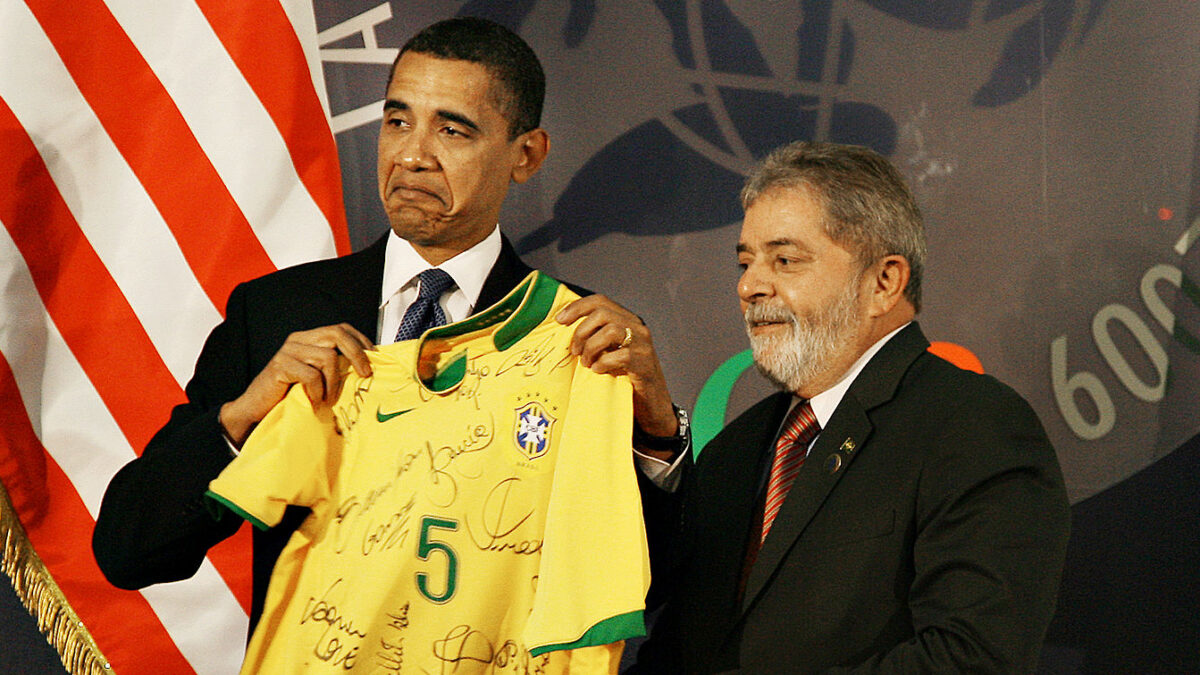If Democrats win the House this week, it won’t necessarily be the historic moment partisans imagine. Even if a blue wave picks up something like 35 seats, which is what FiveThirtyEight is forecasting, the results would probably fall well within historic norms for an opposing party during a president’s first term. Now, if Republicans held the House, or even lost less than 20 seats, well, that, historically speaking, would be somewhat noteworthy.
Here are the House gains and losses of presidents in their party’s first midterm, going back over a century.
In 1902, Democrats outperformed Teddy Roosevelt’s GOP in a newly reapportioned House midterm.
Howard Taft lost 56 seats in 1910.
Woodrow Wilson lost 61 in 1914.
Warren Harding lost 77 in 1922.
Calvin Coolidge lost 9 in 1926.
Herbert Hoover lost 52 in 1930.
FDR gained 9 in 1934.
Harry Truman lost 54 in 1946.
Dwight Eisenhower lost 18 in 1954.
John Kennedy lost 4 in 1962.
Lyndon Johnson lost 47 in 1966.
Richard Nixon lost 12 in 1970.
Gerald Ford lost 48 in 1974.
Jimmy Carter lost 15 in 1978.
Ronald Reagan lost 26 in 1982.
George H.W. Bush lost 8 in 1990.
Bill Clinton lost 54 in 1994.
George W. Bush gained 8 in 2002.
Barack Obama lost 63 in 2010.
The only two presidents since the start of the 19th century who avoided losing seats in their first midterm were George W. Bush and Franklin Roosevelt. For that matter, only three presidents gained any seats in any midterm election in the previous 100 years. (Clinton’s post-impeachment midterm of 1998 was the other).
Even when winning those midterms, re-alignment would be inevitable. Bush’s GOP gained eight seats in the first election after 9/11, but Republicans went on to lose 30 seats in Bush’s next midterm. FDR’s Democrats, whose win came during the early Depression, lost 72 in the 1938 midterm, then 45 seats in 1942 (although Democrats still held the majority).
Of course, every election has its unique characteristics, including the configuration of Congress at the time of the vote. Surely, though, a durable historic trend like this one tells us something.
My theory — or, I should say, my hope — is that voters instinctively split power in DC. That’s not to argue that the inclination is driven by pure idealism. Far from it. It’s almost certainly propelled by the opposing party’s voters being more motivated to participate after losing the White House. The reaction seems most pronounced when presidents rely on unprecedented partisanship and abuse executive power.
Then again, partisanship, not “unity,” also turns out to be a safeguard against irresponsible centralized democracy. If Republicans hold the Senate, Washington will replicate the reality of our national political environment, which is a place with little room for compromise.
Whatever the case, partisans who act as if midterm elections are wholly a repudiation (or embrace) of the president are fooling themselves. Fickle voters have always been able to compartmentalize their votes. Some presidents, like Obama, saw their party rack up historic losses (his presidency crashing against one red wave after the next), despite enjoying decent levels of personal popularity.
Now, it would be silly to argue that the president is completely irrelevant in the midterms. But consider the Gallup approval ratings of presidents on the eve of the first midterm: George W. Bush, 63 percent; Eisenhower, 61; Kennedy, 61; Nixon, 58; H.W. Bush, 58; Carter, 49; Johnson, 49; Obama, 45; Reagan, 42; and Clinton, 41. There is some correlation, but if this election were only about the president and his 41-percent approval rating, Democrats should be expecting to win 50-60 seats.
Maybe they will. The only prognosticators we can really trust are the ones who say they don’t know. Still, the RealClearPolitics poll average shows Democrats up 7.3 points on the generic congressional vote. It’s less than the 6.8-point lead enjoyed by Republicans in 2010, so maybe Dems are in for a big night on Tuesday. Or maybe 2016 proved that polling is no longer as effective as it once was. Or maybe generic national polls tell us little about House races. Whatever the case, those numbers are now well within the norms for a midterm.
What is no longer within the norm is the amount of money spent getting to a political reality that was probably assured before the first midterm mailer was sent. The Center for Responsive Politics found that 2018 was already by far the most expensive midterm in history, with $5.2 billion to be spent this election cycle. Some of this can be attributed to Republicans, but the uptick in spending is driven primarily by “unprecedented Democratic fundraising.”
All that money (and hysterics surrounding this presidency) might make it seem like another great moment in history. It’s probably not going to be one.









